People
‘This Moment Is Like a Tornado’: In the Past Month Alone, 17 American Museums Have Cut Almost 1,500 Jobs
Museums across the US instituted cutbacks as PPP loans and the 2020 fiscal year ended in June.
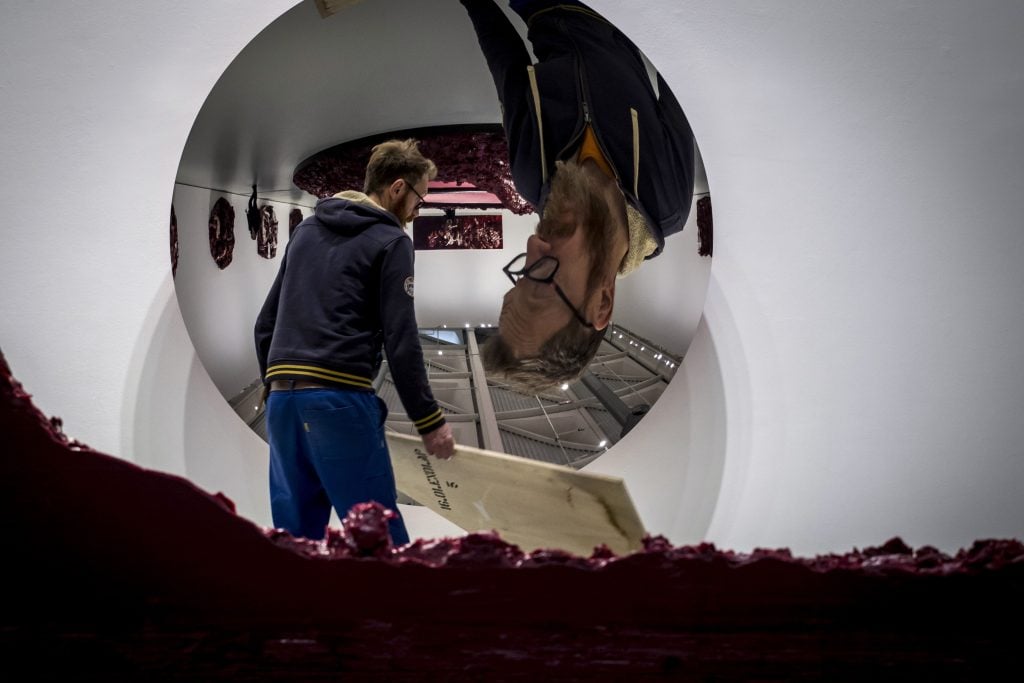
Museums across the US instituted cutbacks as PPP loans and the 2020 fiscal year ended in June.

Sarah Cascone

As museums shut their doors in March, cultural institutions across the US were forced to lay off staff as revenue streams abruptly dried up. Now, museums are slowly starting to reopen—but a significant portion of the staff that kept them running will not be there to greet visitors. A second round of layoffs has seen at least 17 institutions make substantial reductions to staff in the past month, affecting a total of more than 1,350 workers, according to analysis by Artnet News.
Throughout June, major art institutions including the San Francisco Museum of Modern Art, the Philadelphia Museum of Art, the Brooklyn Museum, and the Walker Art Center in Minneapolis announced plans to reduce staff, citing revenue loss and looming deficits caused by the extended closure.
“Most museums—not necessarily all of them—have fought to hold onto staff as long as possible,” Adrian Ellis, the founder of AEA Consulting, told Artnet News. “If you’re in a prolonged period of closure, it’s a extremely difficult position to be in… but at some point you’re going to have to make tough decisions—that’s why you’re paid to run the institution.”
Some say that museums could have done more to save people’s jobs, and that the latest wave of layoffs reveals fundamental flaws in the United States nonprofit model. The Blanton Museum of Art at the University of Texas at Austin, for example, avoided layoffs by matching employees with new tasks that were often put off. But most museums do not have enough financial cushion to retain their full workforce without additional philanthropic support or ongoing ticket sales and other revenue.
According to a 2016 survey from SMU DataArts, the median art museum has just 1.5 months’ worth of working capital (or cash in hand), underscoring the catastrophic impact of closures that have dragged on for three months or more.
Last month’s layoffs frequently coincided with the end of federal aid from the Paycheck Protection Program, which offers forgivable loans to businesses with under 500 employees. Under the initial PPP guidelines, three-quarters of the loan—which lasted eight weeks—had to be spent on payroll. The cuts also came at the end of the fiscal year, a time when museums reset their budgets.
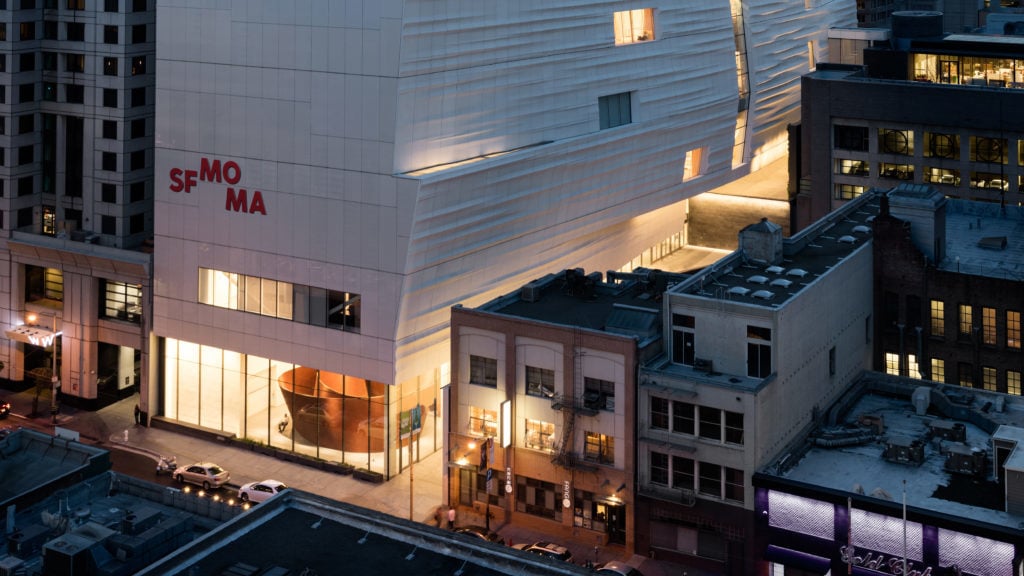
The entrance to SFMOMA. Image courtesy SFMOMA.
SFMOMA had nearly 500 employees before lockdown. In March, it announced that it would lay off 135 on-call workers while furloughing or reducing hours for an additional 188, some 60 percent of its staff. A $6.2 million PPP loan meant that the cuts were limited only to the on-call workers. But the museum still faces an $18 million deficit going into the new fiscal year, and at the beginning of June announced the layoff or reduced schedules of 55 staffers, effective at the end of that month.
When the PPP money came in, SFMOMA staff started a Change.org petition warning that “while this is a temporary reprieve for SFMOMA workers, we know that this simply kicks the can down the road.” A second petition asked the museum to reconsider layoffs, saying that “staff at all levels have offered to decrease their hours or pay, to share what workload exists in order to preserve all of our jobs.”
Signatories criticized the “unreasonably large salaries” of executive staff, noting that “even after taking a 50 percent pay cut, [museum director] Neal Benezra earns more in one month than a full-time frontline staff member earns in an entire year.”
But even pay cuts can only go so far, and some advocates have called on wealthy museum board members step in to cover ballooning deficits and payroll expenses.
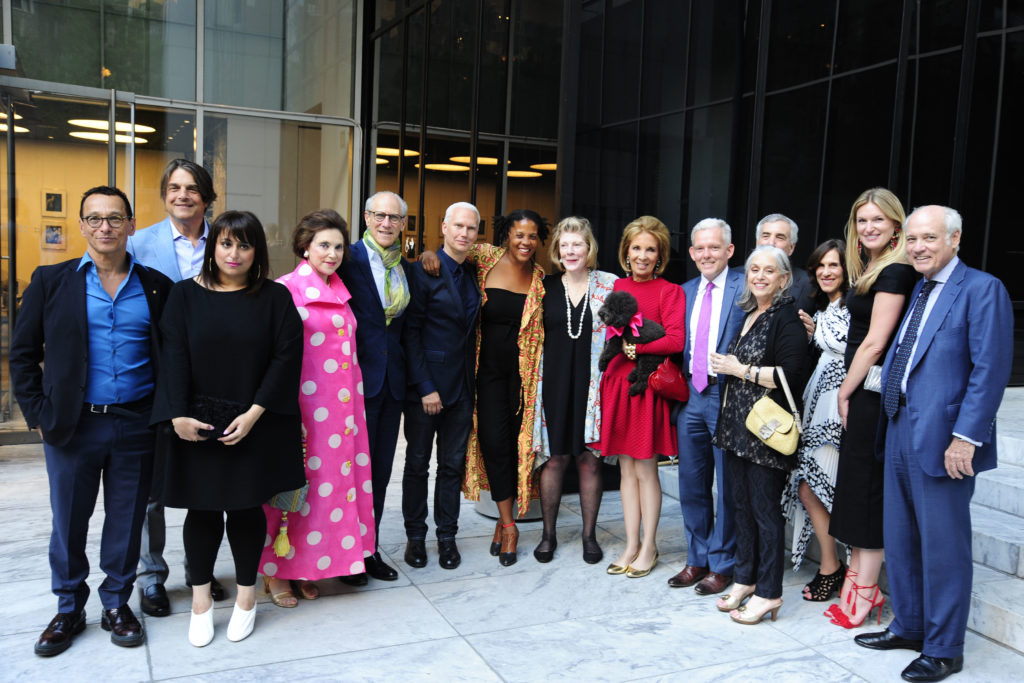
MoMA PS1 Board Members at the 2017 MoMA PS1 Benefit Gala. Photo ©Patrick McMullan/ Paul Bruinooge/PMC.
“Some board members are stepping up, but most are not,” said Art and Museum Transparency, an art workers’ collective looking to improve museum working conditions. “This is particularly egregious given the discrepancy between the healthy financial markets and plummeting employment rates. It is important to recognize that board members can afford to support staff through this, but are choosing not to.”
The squeeze comes as museums have increasingly relied on a small number of donors giving large amounts of money to fund ambitious capital projects. Just four people—Leon Black, David Geffen, Ken Griffin, and Steve Cohen—gave more than 50 percent of the Museum of Modern Art’s $400 million capital campaign to fund its recent expansion. “Asking them to protect workers is a much more modest request, but it doesn’t come with an auditorium or gallery named after them,” Art and Museum Transparency said.
Without emergency support, and with many closures still continuing, as many as one in eight such institutions worldwide may shutter for good, according to reports from UNESCO and the International Council of Museums.
“This moment is a bit like a tornado. As a tornado goes through an area, you can have a house that’s standing and next to it one that’s disappeared, just because of the path of the tornado,” said Ellis. “There’s quite a high likelihood of quite a lot of change.”
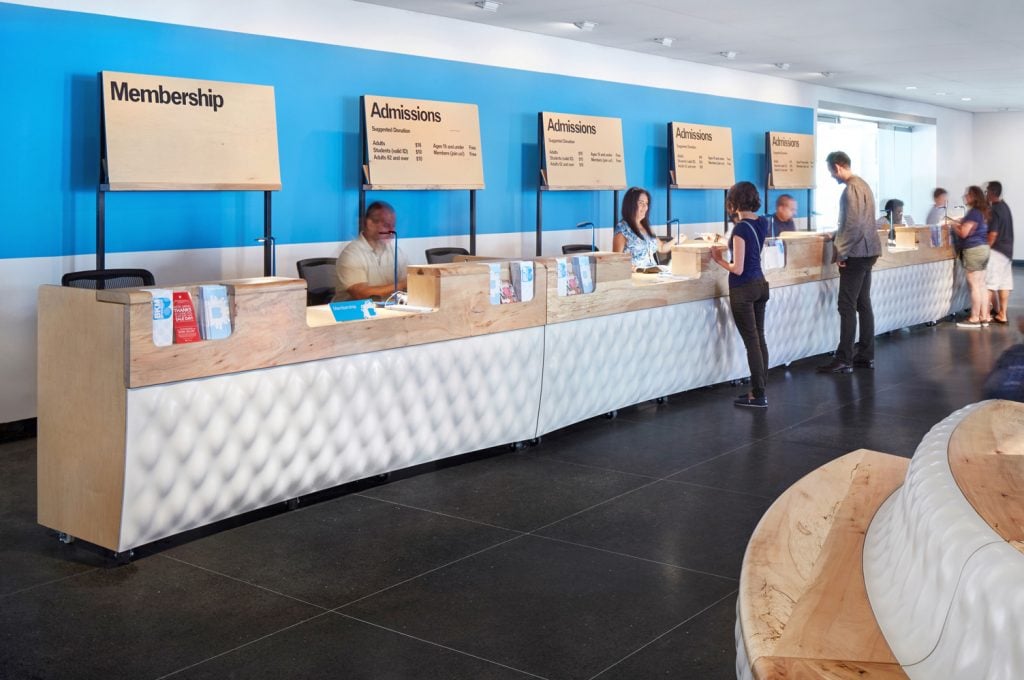
The front desk at the Brooklyn Museum. Photo by John Muggenborg, courtesy of MTWTF.
Much of the criticism of museum layoffs has centered around who exactly is losing their jobs. In many instances, institutions are cutting visitor-facing roles in anticipation of reduced hours and attendance. These same roles tend to have a higher proportion of staff of color than executive-level positions, according to museum staffing surveys.
And although plenty of senior staff have taken pay cuts, those jobs also seem to be the most secure, in part because of their specialized knowledge.
When the Brooklyn Museum laid off 29 employees on June 29, “the decision-making process was conducted with a commitment to equity, and therefore strove to have cuts fairly distributed across departments,” the museum said in a statement, noting that the percentage of BIPOC workers had actually increased from 49.8 percent to 50 percent of staff with the cuts.
But the bigger picture is more ambiguous. “Layoffs did not impact senior staff at all. So, they are not equitable at all, especially as management and senior staff is largely white,” one Brooklyn Museum employee told Artnet News.
Art and Museum Transparency has been advocating for institutions to disclose not only the size of salary cuts for top staff, but also the duration of those cuts, as well as to implement “longer-term redistribution of their payrolls to address inequities across their institutions.”
“We believe museums should honor their professed commitments to equity by supporting those staff who need it the most—the lowest paid and most precariously employed—and by cutting pay or reducing hours for those who need it the least—the highest paid and most securely employed,” the organization said.
Some museum staff members have taken these measures into their own hands. In a striking display of both staff unity and the challenge of addressing inequality swiftly on an institutional level, the Brooklyn Museum’s staff banded together to set up the the Brooklyn Museum Mutual Aid Fund. A GoFundMe pledging to support “fellow and former colleagues facing financial hardship, food insecurity, and housing insecurity” with relief payments of up to $500 each has raised over $57,000 in just three days.
Top contributors included the museum’s director, Anne Pasternak, who gave $1,500; former Brooklyn Museum director Arnold Lehman, who gave $1,000; senior contemporary art curator Eugenie Tsai, who gave $1,000, and David Berliner, the museum’s president and COO, who gave $1,000.
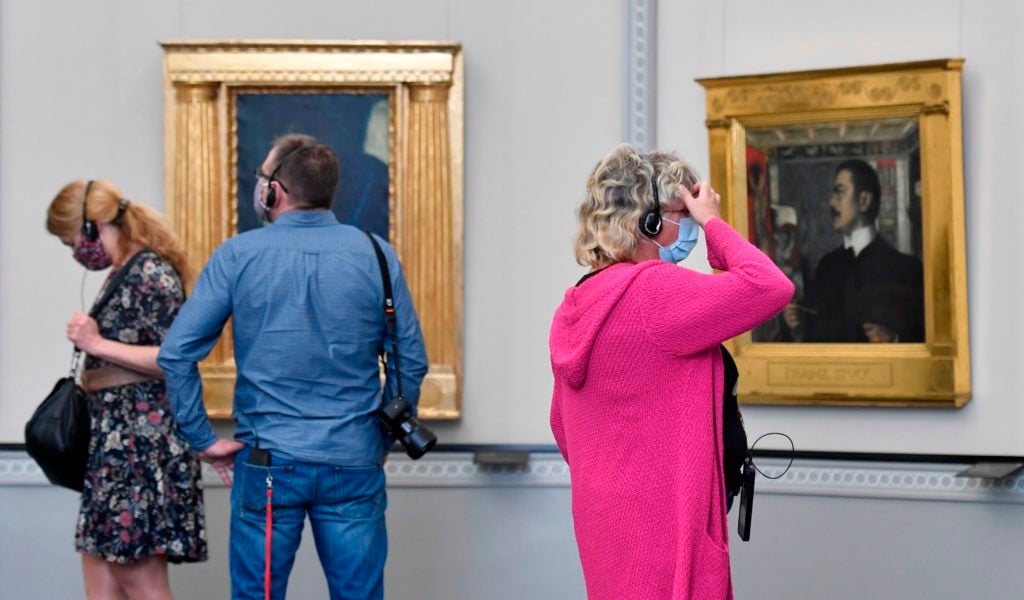
Visitors wearing face masks look at paintings at the Alte Nationalgalerie (Old National Gallery) museum in Berlin. Photo by JOHN MACDOUGALL/AFP via Getty Images.
Unfortunately for museum employees, institutions probably aren’t out of the woods just yet. “I expect another series of layoffs announced late August,” when the second round of PPP expires, said Ellis.
Museum workers are well aware of the uncertainty they face.
“There’s a general psychological weight for art and museum workers now—those that have not yet been laid off or furloughed know that more layoffs are imminent, but lack a seat at the table in decisions directly affecting them, so are working in a state of limbo for weeks at a time,” said Art and Museum Transparency.
And as the outbreak intensifies in many states, it remains uncertain whether museums will be able to safely operate in the coming months, potentially extending (or reinstating) closures and the associated revenue loss.
“Institutions are probably making a set of decisions premised on a longer time horizon of mayhem than they might have been three or four months ago,” said Ellis. “This is probably the most difficult period in most museum management’s professional lives… This is completely uncharted territory.”
June 2
Chicago’s Children’s Museum laid off 74 of 100 employees, furloughing an additional six workers. (Chicago Tribune)
June 8
SFMOMA laid off or reduced schedules of 55 employees, after having let go 135 on-call workers in March. It is projecting an $18 million deficit for the fiscal year of 2021 following a $7 million deficit in 2020. (KQED)
June 12
The Preservation Society of Newport County, Rhode Island, laid off 231 of the 336 employees at its 11 historic homes and mansions, or 69 percent of its staff. (NewportRI.com)
The Cleveland Museum of Natural History laid off 26 employees, or 10 percent of the staff, reducing the $15 million annual budget by $1.2 million and helping make up for the $1.5 million lost during the shutdown. (Cleveland.com)
June 15
The Georgia O’Keeffe Museum, Santa Fe, laid off 45 employees, or 44 percent of staff, after a $1 million PPP loan ran out. (Santa Fe Reporter)
June 16
The Fine Arts Museums of San Francisco (the de Young Museum and the Legion of Honor) laid off 14 staff members and furloughed an additional 33 employees in light of a projected $20 million revenue loss. The institution had received a $4.1 million PPP loan. Director and CEO Thomas P. Campbell is taking a 10 percent salary cut, and executive leadership is taking cuts of up to five percent. Eliminated positions will get up to six months severance and 90 days health insurance. (KQED)
The Seattle Art Museum furloughed or reduced hours for 76 employees. The job cuts come after the museum exhausted a $2.8 million PPP loan and additional support from board members. (Seattle Times)
June 17
The Peabody Essex Museum in Salem, Massachusetts laid off 38 workers, 15 percent of the 260-person staff, in anticipation of a $6 million drop in its $36 million budget, once its PPP loan (between $2 million and $5 million) ran out. Employees making over $110,000 are taking 10 to 25 percent pay cuts. (Boston.com)
June 18
Minnesota Historical Society laid off 176 employees and furloughed 139 workers. The organization had nearly 600 employees across its 26 sites before lockdown. (Star Tribune)
June 21
The National September 11 Memorial & Museum, New York, laid off 148 workers and furloughed 51 employees, out of a staff of 337, following a $4.6 million PPP loan. Pay cuts have been instituted across the board, with five percent for lower paid employees and up to 15 percent for the director, who made $530,000 as of 2018. Facing a deficit of up to $45 million, the museum has cut its annual operating expenses, formerly $80 million, by about 50 percent. (New York Times)
June 22
The Museum of Jewish Heritage, New York, cut 32 jobs, or more than 40 percent of the staff. The job losses, which come after the end of a PPP loan of $350,000 to $1 million, were in visitor services and tours. After initially stating that there would be no reductions to executive-level salaries, CEO Jack Kliger announced that he was taking a 15 percent pay cut and that there would be salary reductions for other management. (New York Times, Forward)
June 22
The Minneapolis Institute of Art cut 39 jobs from its staff of 250, slicing its projected operating budget from $34 million to $30 million as its PPP loan ran out. Leaders at the museum had already taken a 15 percent pay cut. The job losses come despite a Change.org petition calling on the museum to retain all staff through board contributions and increased salary cuts. (Star Tribune)
June 24
The Walker Art Center, Minneapolis, laid off 33 people effective July 1, all visitor-facing staff. Executive director Mary Ceruti is taking a 20 percent pay cut, with 10 percent pay decreases for other senior leadership. The museum is projecting a $5.7 million drop in revenue, equivalent to 26 percent of last year’s operating budget. (Minnesota Post)
The Science History Institute, Philadelphia, laid off 14 full-time employees and two part-time employees of a staff of 85 after its $1 million-to-$2 million PPP loan expired. (Email)
The Philadelphia Museum of Art announced plans to eliminate more than 100 of its 481 jobs, or more than 20 percent of its staff, through a combination of furloughs, severance packages, and layoffs. The museum, which had received a PPP loan of between $5 million and $10 million, was predicting a $6.5 million shortfall in its $49 million budget for the 2021 fiscal year starting July 1, already down from $60 million in 2020. (The Philadelphia Inquirer)
June 29
The Brooklyn Museum laid off 26 full-time and three part-time employees, or seven percent of the 412-person staff. The museum had received a $4.5 million PPP loan. Its director and president took 25 percent pay reductions when the museum closed, and full time staff making over $75,000 are being partially furloughed (one day a week) until reopening. (Email)
June 30
The New Museum, New York, laid off 18 workers who had been among 41 staff members put on furlough in April, or 27 percent of full-time staff, on top of earlier reductions. After earlier reductions, only 56 of 137 staff members remain on payroll, including just seven union members from a unit of 84. The museum has cut the director’s salary by 30 percent, with 10 to 20 percent pay cuts for other executives. The museum received a PPP loan of between $1 million and $2 million in April. Health care for furloughed or laid off employees is being extended through August. (Artnet News)